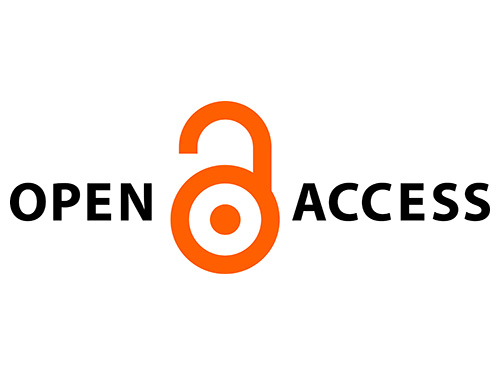This blog post is published to coincide with International Open Access Week, October 25-31, 2021. The theme of this year’s Open Access Week is “It Matters How We Open Knowledge: Building Structural Equity.”
It has now been almost 20 years since the Budapest Open Access Initiative (BOAI) launched the open access movement. In late 2001, a small group of academics from various countries and disciplines met in Budapest to discuss how to advance the international effort to make research articles freely available on the internet. The original BOAI declaration (2002) first coined and defined the term “open access” (OA) and is widely considered one of the foundational documents of the OA movement.
The declaration begins with this inspirational passage:
“An old tradition and a new technology have converged to make possible an unprecedented public good. The old tradition is the willingness of scientists and scholars to publish the fruits of their research in scholarly journals without payment, for the sake of inquiry and knowledge. The new technology is the internet. The public good they make possible is the world-wide electronic distribution of the peer-reviewed journal literature and completely free and unrestricted access to it by all scientists, scholars, teachers, students, and other curious minds. Removing access barriers to this literature will accelerate research, enrich education, share the learning of the rich with the poor and the poor with the rich, make this literature as useful as it can be, and lay the foundation for uniting humanity in a common intellectual conversation and quest for knowledge.”
It goes on to describe two complementary strategies for achieving this: publishing in OA journals, and self-archiving in OA repositories (such as USask’s HARVEST!). These strategies are also known as the “gold” and “green” routes respectively.
In the subsequent two decades, OA has made many advancements and is widely predicted[1] to be the dominant mode of access to journal literature in the near future. Despite these advancements, inequities in the system remain prevalent. As the paywalls to reading the journal literature gradually come down, paywalls for authors are erected. One business model for funding gold OA journals is through an “article processing charge (APC)” to authors. While readers from disadvantaged communities or low-income countries can increasingly access the literature, authors from these communities and countries cannot publish in these journals due to high APCs (though some of these journals indicate they will waive APCs in cases of financial need). Indeed, authors anywhere without sufficient grant funding cannot afford the unreasonably high APCs that are becoming commonplace.
This is not what the original signatories of the BOAI envisioned.
At this point I feel obliged to point out that there are many, many gold OA journals that do not charge APCs, there are many new business models to fund OA publishing that do not charge readers or authors, and of course there is the green route to OA that is always FREE to authors! But the reality is that legacy commercial (and some non-profit society) publishers recognize that OA is the future and are co-opting it as an additional revenue stream seeking to preserve their extraordinarily high profit margins as they make this transition. This is why APCs are often much higher than the actual costs[2] of publishing.
It does not have to be this way.
OA advocates are working on solutions, but there are also many things authors can do to influence positive change to more equitable and sustainable scholarly publishing. Authors freely provide the content and labour upon which this system relies and therefore hold considerable power with the choices they make. Here are some suggestions:
- Publish only in ethical, innovative, community-driven and community-controlled OA outlets that charge reasonable or no APCs; many such outlets exist, seek them out!
- Provide reviewing and editorial work only for those same ethical OA outlets.
- No such options in your discipline? Then start a conversation with your scholarly society to lead this change with their journals (here is a resource to help).
- Make all your own articles OA. Even if they have been published in conventional paywalled journals you can usually still make a version OA for FREE through repositories like HARVEST. Unsure how? Ask us!
- Reform the tenure and promotion standards in your unit to be less reliant on prestige journals and impact factors as proxies for quality in the assessment of research. This is ultimately how legacy, profit-driven publishers have been able to maintain control of this system. There are more responsible metrics and methods for the evaluation of research.
I realize these are not simple or easy actions to take, but they are necessary actions if we truly want a more sustainable and equitable publishing system that includes all voices in the conversation and accelerates the progress of research. Those were the original objectives of the OA movement articulated 20 years ago.
By DeDe Dawson, associate librarian, science and scholarly communication
[1] Lewis, D. W. (2012). The Inevitability of Open Access. College & Research Libraries, 73(5), 493–506. https://doi.org/10.5860/crl-299; Piwowar, H., Priem, J., Larivière, V., Alperin, J. P., Matthias, L., Norlander, B., Farley, A., West, J., & Haustein, S. (2018). The state of OA: a large-scale analysis of the prevalence and impact of Open Access articles. PeerJ, 6(2), e4375. https://doi.org/10.7717/peerj.4375; Piwowar, H., Priem, J., & Orr, R. (2019). The Future of OA: A large-scale analysis projecting Open Access publication and readership. BioRxiv, 795310. https://doi.org/10.1101/795310.
[2] Grossmann, A., & Brembs, B. (2021). Current market rates for scholarly publishing services. F1000Research. https://doi.org/10.12688/f1000research.27468.2
